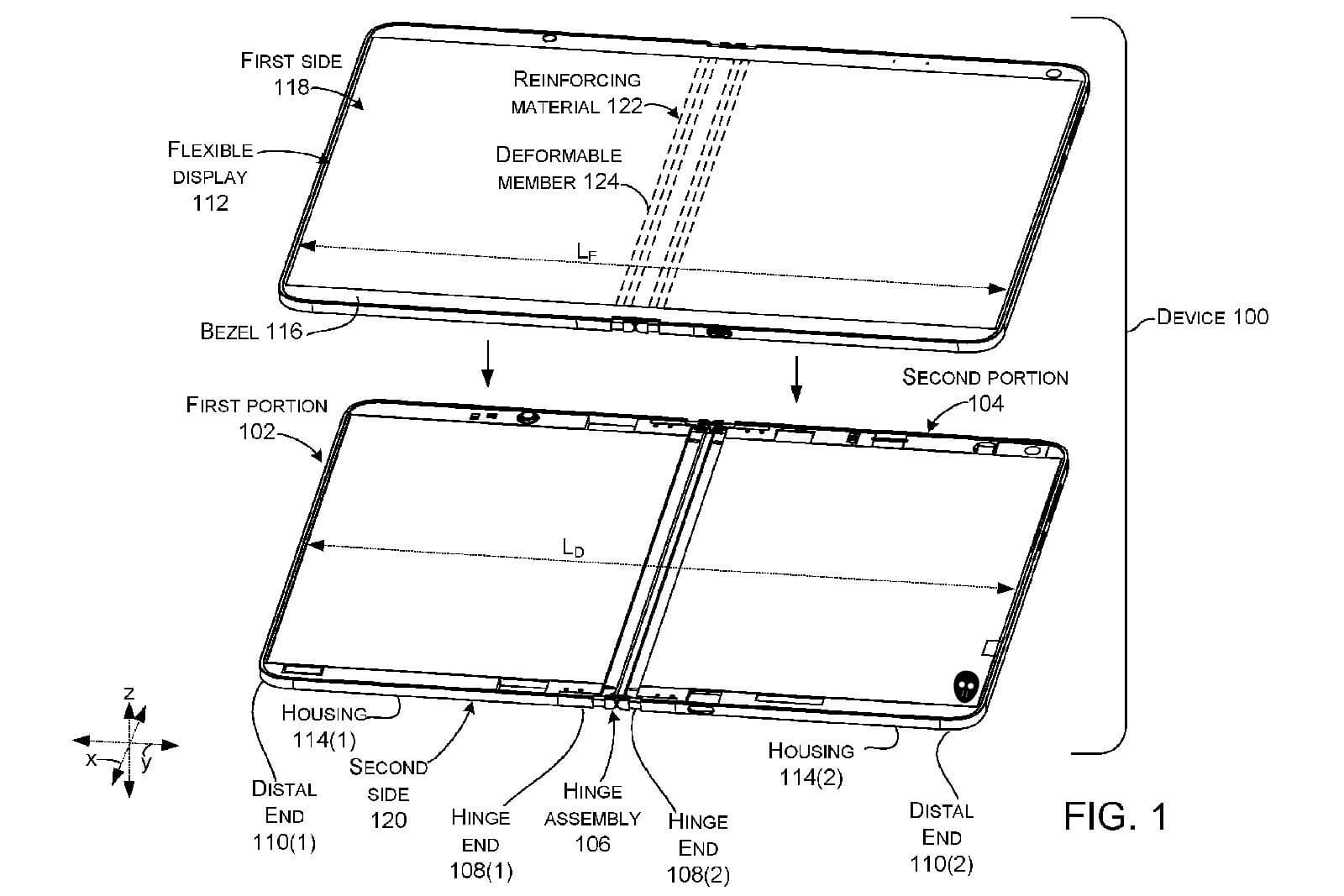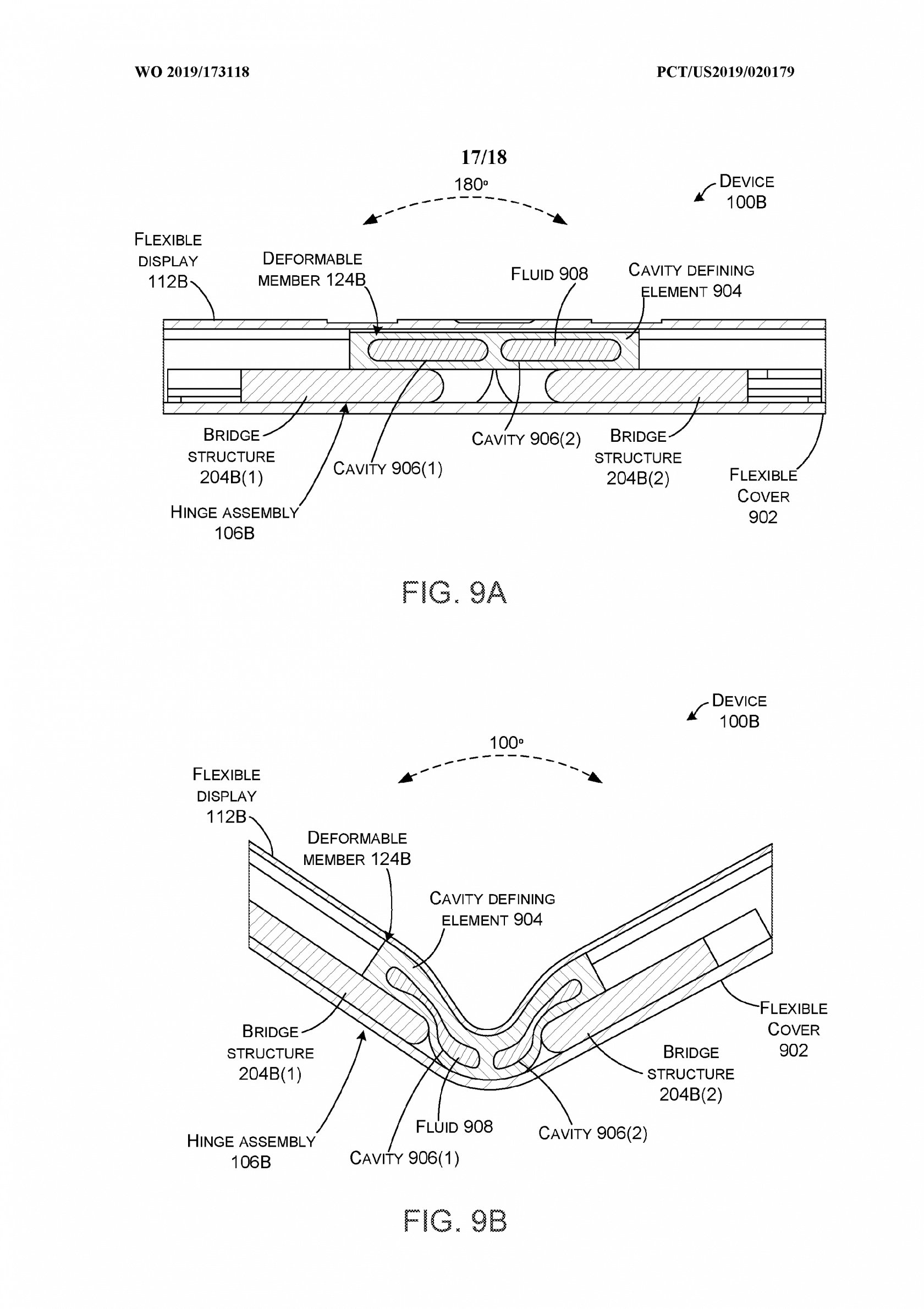
It seems like just about every major laptop, tablet, or smartphone maker is confirmed or at least rumored to be working on a folding-screen device of some kind. There's Samsung's Galaxy Fold, Lenovo's ThinkPad X1, and now, Microsoft may be taking an increased interest in this market segment as well.
According to a patent filed by the company with the World Intellectual Property Organization, Microsoft has toyed with the idea of a dual-screen device with a unique hinge design. In one potential implementation, the hinge could be filled with either a gas or "semi-viscous" liquid that would "slowly move" within the hinge's cavity.
The purpose of this design would be to keep out dust and protect the overall integrity of the device by lowering stress at the flex point. You can see Microsoft's interpretation of the idea in the drawing below.

Though we'd have to see this design in action before we could confirm its effectiveness, it does seem like a smart answer to a difficult problem. Other folding-screen devices, such as Samsung's Galaxy Fold, have struggled with quality assurance and durability as of late (though the Fold situation is improving).
At any rate, this isn't the first time rumors of a Microsoft-designed folding device have hit the web. The company is reportedly working on a dual-screen Surface laptop of some kind (it was shown to employees behind closed doors back in June), so perhaps this hinge technology may be put to use there.
Notably, however, Microsoft's patent concept images more closely resemble a folding tablet or smartphone than a full-sized laptop -- further, as Engadget spotted, this patent was filed by the company's technology licensing team, which suggests it may sell off the concept rather than a product.
Regardless, the usual disclaimer: this concept is just a patent at the moment, and does not necessarily mean Microsoft will actually release or license folding tablet, smartphone, or laptop with a similar design. Technology like this sometimes gets patented just so a company can more easily block competitors from swiping its ideas. Either way, we look forward to seeing what the future holds for Microsoft-branded dual-screen and folding-screen gadgets.